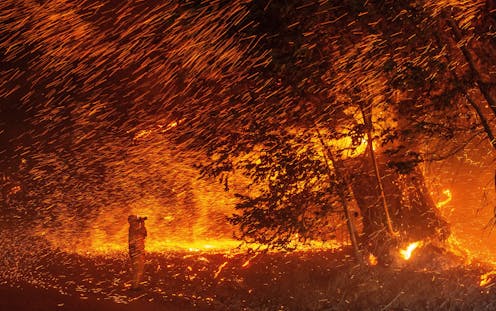What everyone needs to know about flaming windblown debris
- Written by David Blunck, Associate Professor School of Mechanical, Industrial, and Manufacturing Engineering, Oregon State University
 A photographer stands in a rain of flaming embers during a fire in California in 2019.Josh Edelson/AFP via Getty Images
A photographer stands in a rain of flaming embers during a fire in California in 2019.Josh Edelson/AFP via Getty ImagesAs firefighters tried to protect homes near Lake Tahoe from one of California’s largest fires on record, they battled, windblown embers that kept sparking new small fires, some well away from the fire line.
Read more: What everyone needs to know about flaming windblown debris

















